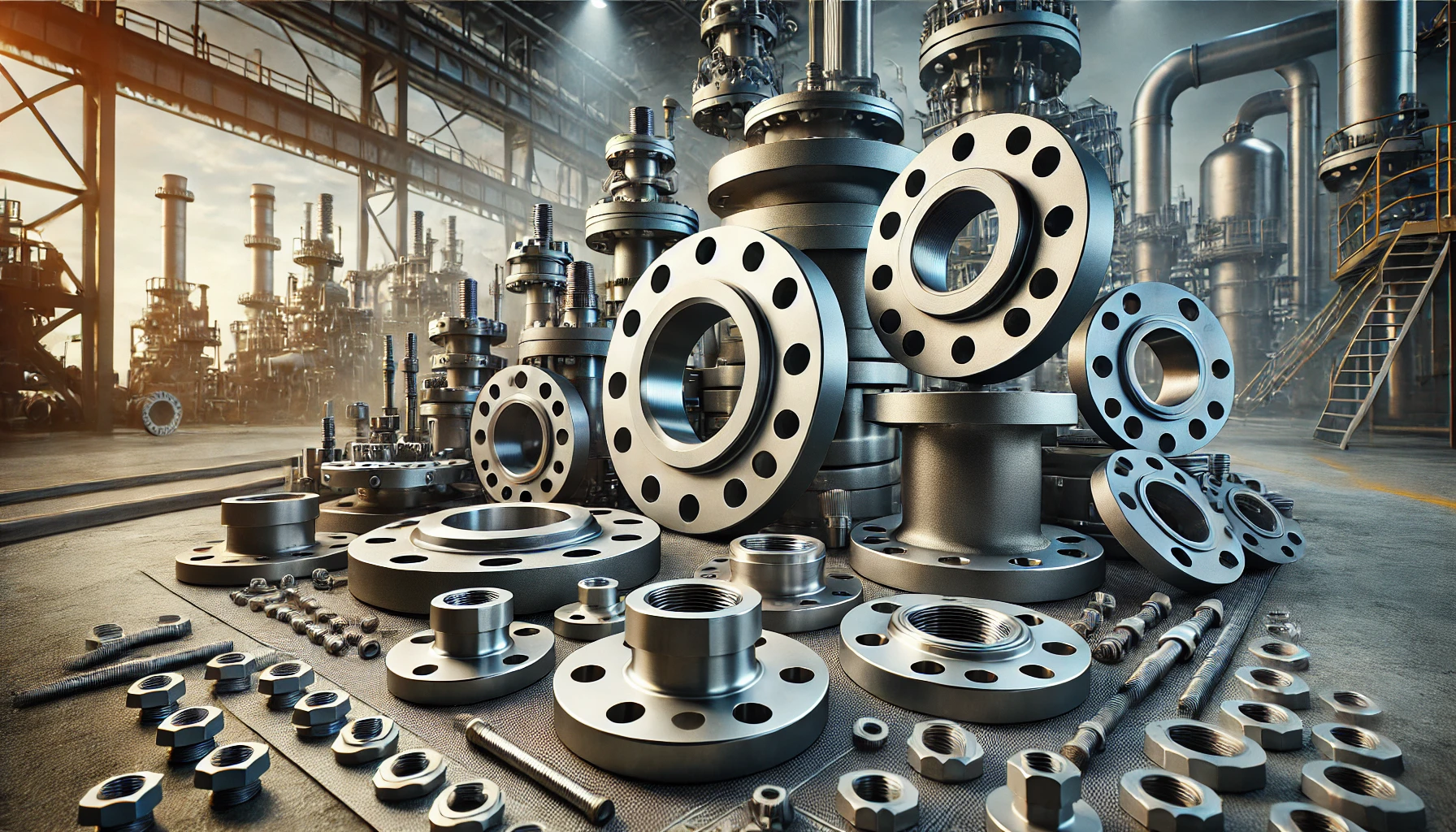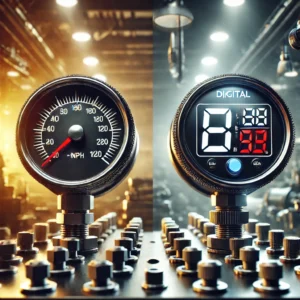Industrial flanges are fundamental elements of piping systems, which are components that interlink pipes, valves, pumps and other equipment. In cases of more demanding high-pressure applications, the material from which the flange is made must be selected painstakingly so that integrity, safety, and performance of the system can be maintained. There is considerable internal pressure, high temperature, and in some cases, even the presence of corrosive materials. The material of the flange plays a central role in determining its ability to handle these conditions and maintain reliability. This article aims to study the greater focus that must be placed on the selection of flange materials in high-pressure systems by underscoring the fundamental factors that need to be considered along with the most popular ones used for these applications.
Understanding High-Pressure Systems
Flanges are regarded as concise components or regions of machines that enable the connection of two machines or pipe sections. A Flange gasket is placed in the flange to ensure no liquid or gas leakage occurs out of the joint, while bolts around the joint ensure adequate fastening. High-pressure systems are usually found in oil and gas, chemical processing, petrochemicals, power generation, and so forth. These industries work under severe conditions including very high pressures, high temperatures, and working with caustic or abrasive materials. In oil and gas, for example, the pipelines which transport oil or natural gas are all under severe pressure. The materials used in the flanges must be able to endure stringent conditions without failure. In chemical processing, systems deal with aggressive chemicals that can corrode flange materials that are not accurately chosen. Therefore, materials used for the flanges also possess strict criteria towards their selection. In high-pressure systems as the ones mentioned previously, flanges must provide assurance for accurate operational procedures.
Key Considerations in Flange Material Selection
Apart from the ones mentioned above, a few conditions ought to be followed while choosing the correct flange material. Correct flange material also ensures high operational efficiency, operational and maintenance cost savings, and significant value saving. Price and temperature respect, mechanical properties, devoid of corrosion, and bolting around gaskets must all be taken into consideration. Each one of the opined factors affects the overall performance and longevity of the flange making it best suited to serve in an environment that has high pressure scenarios.
1. Pressure and Temperature Resistance
The resistance to internal pressure as well as temperature extremes is one of the most important considerations when selecting a flange material for high-pressure systems. High pressure systems exert a considerable amount of force against flanges, and the material used is expected to have sufficient tensile strength to be able to endure these forces without failing or deforming. Carbon steel is commonly used in flanges for moderate pressure and temperature conditions; while stainless steel or duplex steel alloys are preferred in cases of extreme pressures or temperatures.
Stainless steel is also more thermally stable and stronger than carbon steel, and therefore is able to maintain thermal and structural stability of the flange during high pressure and high temperature conditions. They are able to withstand the high stresses and extreme pressure differentials characteristic in high pressure systems.
2. Corrosion Resistance
Corrosion is another major concern for high pressure systems, especially where the flange is at risk of coming into contact with chemicals, water or gas. Flanges used in refineries, chemical plants, and offshore platforms, for instance, have to be corrosion-resistant so as not to ruin the system. In these cases, materials like stainless steel, alloy steels and other specialized corrosion-resistant alloys are often picked because of their protective properties against oxidation and corrosion from aggressive chemicals and other harmful agents.
For example, stainless steel is great for systems that face moist and corrosive conditions because it does not rust and can withstand corrosion. There are also more exotic alloys like Inconel and Hastelloy, which are used in harsher conditions that standard materials cannot handle.
3. Mechanical Properties
The mechanical properties of flange materials are also very important and are along with the ability to withstand pressure and temperature. The material selected must have a high tensile strength, yield strength, and ductility so that it can withstand mechanical stress without fail. One of the most important sources of increase in pressure is gas compression in tanks, especially in high-power systems. Flanges tend to be the weakest link in those systems, which is why they are most crucial to strong systems. Any weakening of the flange can cause leakage or, in the worst-case scenario, an explosion.
For systems that require both strength and flexibility, materials like alloy steels or duplex steels are often used. The alloy steels and duplex steels materials used are ductile enough, yet strong enough, such that the flange will also be able to withstand pressure and other mechanical forces without breaking or becoming brittle over a long period of time.
4. Compatibility with Gaskets and Bolting
The flange also has to securely seal two piping joints making them gasketed and bolted to be leaking proof. Thus, the materials of the flange should be compatible with the sealing gaskets as well as the bolting used in the piping system. It is important for the flange material chosen is neither solvent nor corrosive to the gasket material which may result in leaking or seal failure. Further, the material for the bolts must also be the same as that of the flange in order to prevent problems such as galvanic corrosion where the two different metals rapidly destroy the weaker one.
In normal circumstances, the flange material can be matched with gaskets which are rubber, graphite or even PTFE due to their sealing properties without compromising the performance of the flange.
5. Cost and Availability
Flange material needs to be adequately evaluated for cost and quality. The best materials are expensive and can endure extreme temperature, pressure, and corrosion. While performance is the primary concern, it is also prudent to consider the amount that the material costs in relation to its maintenance and lifespan. For long-term efficiency and safety of the system, the right balance should be chosen between cost and performance. This will help ensure safety and efficiency in the long run.
Carbon steel is often selected for less challenging designs because of its availability and low cost. However, stainless steel and alloy steels may be expensive, but perform better for high-pressure situations. So, the increased material cost is often justified.
Common Flange Materials for High-Pressure Applications
Material selection for new designs is governed with several advantages and restrictions of every new material. And since no single material can withstand the three elements (pressure, temperature, and corrosion) at a mechanical stress at the same time, new materials keep cropping up.
1. Carbon Steel
For moderate pressure systems, carbon steel is one of the common materials used on flanges. It is strong, durable, and reasonably inexpensive, which makes it ideal for general use. However, carbon steel flanges do not resist corrosion well and are unsuitable for harsh environments. Nevertheless, they are suitable for many industries that have temperate conditions and do not suffer from a harsh corrosion environment.
2. Stainless Steel
Stainless steel is common in high pressure systems and flanges due to its outstanding corrosion resistance and Stainless steel is also strong and versatile. It is ideal for offshore platforms, chemical processing, and food processing. Flanges from stainless steel are provided in different grades where 304 and 316 are most common for general use. In very difficult conditions, higher grades like 904L which are more resistant to corrosion can be used.
3. Alloy Steels
Reliance on external elements like chromium, molybdenum, or nickel into carbon steel results in the formation of alloy metals. This allows for the strengthening of the corrosive and high-temperature endurance of the material. It’s common to find these materials in high-pressure systems as they are durable and strong. Power plants, petrochemical plants, and other industries operating under extreme pressures and temperature conditions can make use of these alloy metals.
4. Duplex and Super Duplex Stainless Steel
These types of steel have greater strength and need of corrosion resistance than the commonly used stainless steel. This type of material is especially designed for systems enduring high pressures of aggressive chemicals or seawater like offshore oil rigs or desalination plants. Duplex steels combine the properties of both austenitic and ferritic stainless steels, providing enhanced mechanical properties and resistance to stress corrosion cracking.
Conclusion
Taking the right material for a flange is very important to ensure the safety and long life of high-pressure systems. This is because the material selection impacts the flange’s capabilities to endure pressure, temperature and corrosive environments. Aspects like resistance to pressure, temperature, and corrosion, mechanical strength, and compatibility of the materials should be evaluated. Appropriate selection of the flange material ensures reliable, leak-proof joints which minimizes maintenance expenses and increases the life of high-pressure systems.










